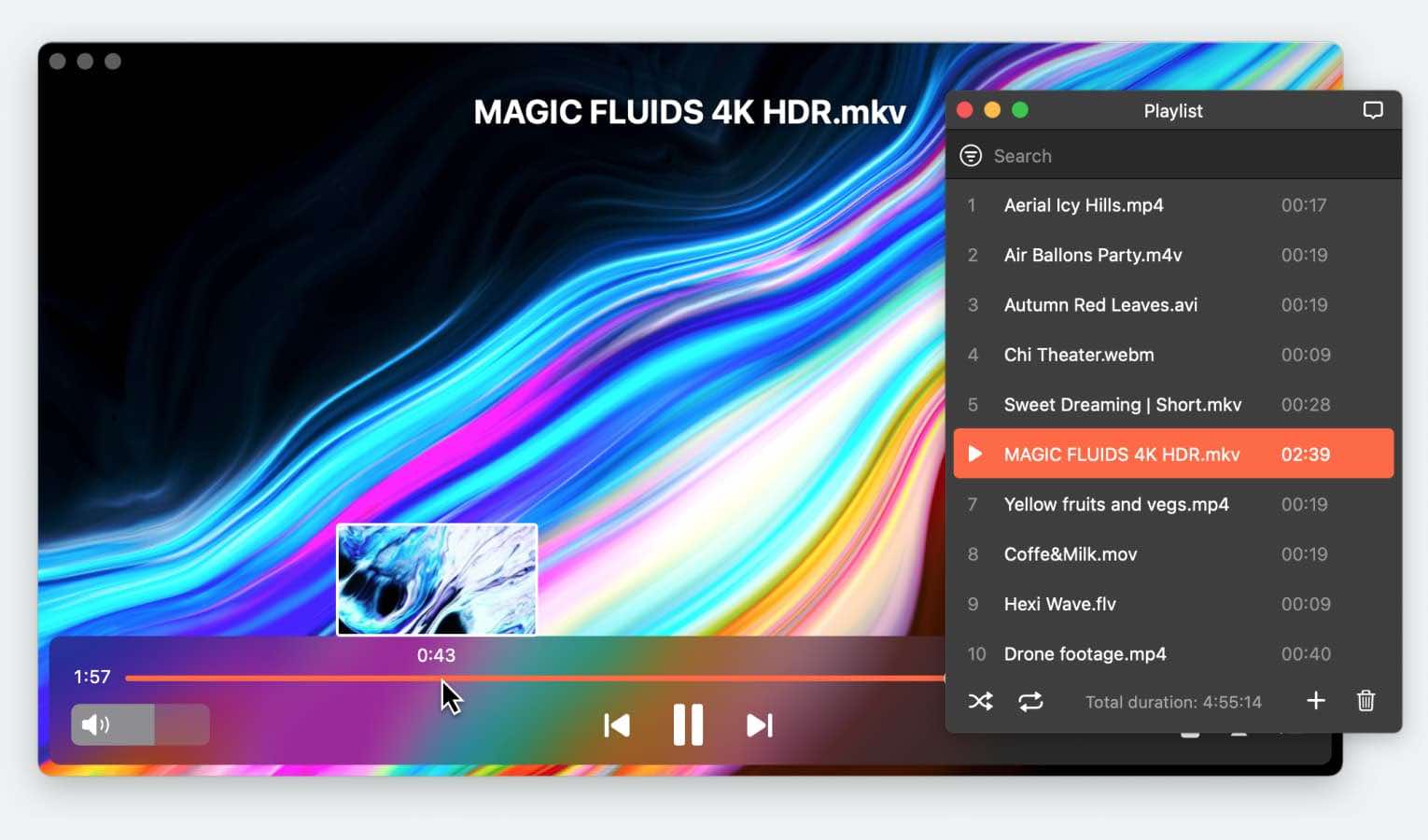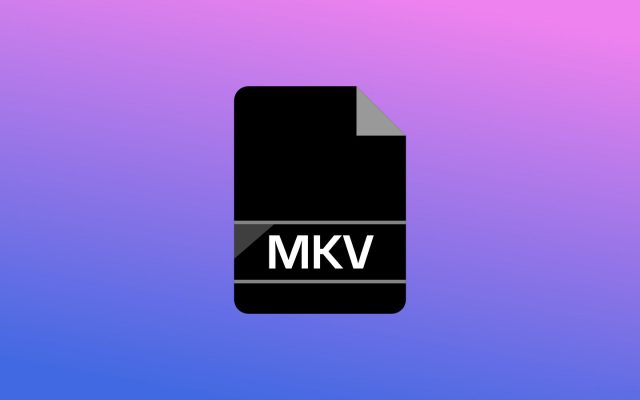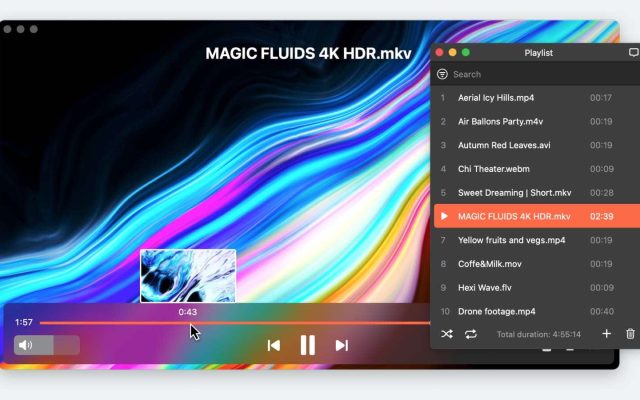MXF file type has an unusual data structure and is not compatible with the native media player QuickTime. In order to open it, Mac users need to use different MXF file converter tools or specialized MXF players. In this article, we will provide you with simple solutions on how to play MXF files on Mac.
User question:
Does anyone know what I should do with my MXF files? They are not running smooth on the MacBook Pro with the M1 Chip. I just saw a Video where it has been tested that it can run 12k RAW Files. Do I need to convert mine before using?— Blackmagic Forum
Solution 1: Using Third-Party Video Players
As we already mentioned, you cannot play MXF with the standard Mac player. The easiest solution is to use a third-party application that supports MXF. Fortunately, there are many players available today to help you watch MXF on Mac. Let’s take a look at the best ones.
Best MXF Player for Mac - Elmedia Player
Elmedia Player is a specialized MXF Mac player with a straightforward interface that would be a go-to choice for both savvy users and newbies. With its help, the question of how to play MXF files on Mac won’t bother you anymore, as the player can easily open MXF file from different camcorders, including Panasonic P2, Canon XF, and Sony XDCAM.
Besides that, Elmedia Player supports flawless playback for a wide list of macOS native and non-native media formats. You can find support for FLV, MKV, MP4, AVI, MP3, OGG, M4A, AAC, F4V, and many more formats on the list. What’s more, the player also offers wireless streaming using different technologies such as AirPlay 2, DLNA, and Chromecast.
Elmedia Player checked on macOS Tahoe.
“Elmedia Player Pro is an inexpensive, more powerful alternative to QuickTime Player, and if you need it, the ability to download web content is easily worth the paid upgrade”— J.R. Bookwalter, Macworld
Among the rest of the advantages of this MXF Mac player, it is worth noting the ability to adjust the video characteristics, support for screenshots, ability to export and import bookmarks, support for Picture-in-Picture mode, built-in equalizer, create your own playlists and way more. The app comes with full subtitle support for both internal and external subtitles. Another important factor of this video player is that it is under constant development.
Pros
- Compatible with various media formats
- Smooth playback
- Adorable interface
- Built-in online subtitles search
- Stream local files to Chromecast, AirPlay, Roku and DLNA devices
Cons
- Advanced features are available in the paid version
Price: free, $19.99 for Elmedia PRO
Platform: macOS
How to Play MXF Files on Mac for Free
- Download Elmedia from the official website. Once downloaded, follow the wizards to get the app installed on your Mac.
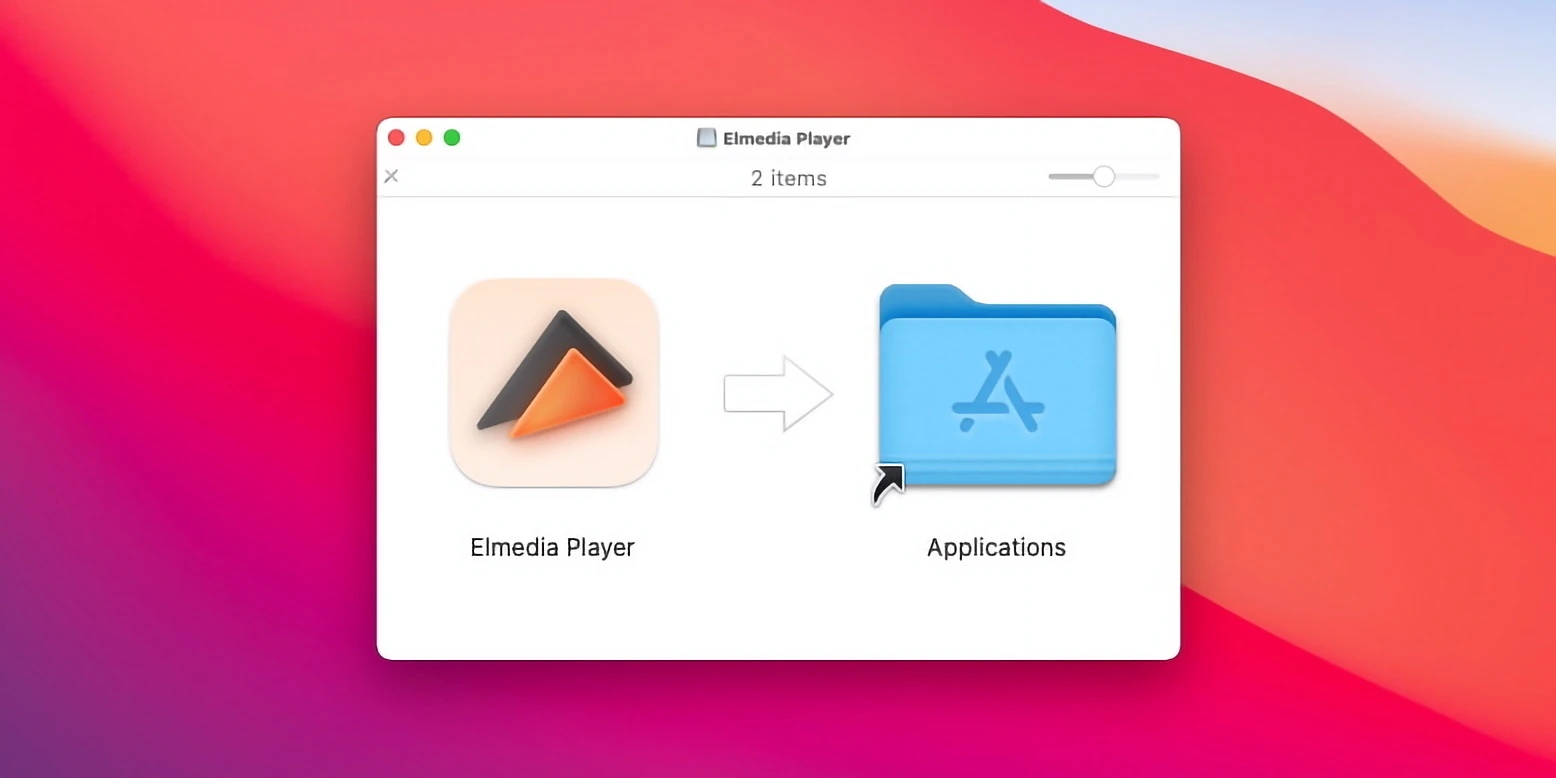
2. Add your MXF files. Launch the app and choose one out of three ways to add the file, namely:
- Drag and drop the chosen MXF file onto the player window or its Dock icon.
- Right-click an MXF file in Finder; choose “Open With”, and then choose “Elmedia Player”.
- Open the “File” menu in Elmedia Player, then tap “Open” and browse to find your file.
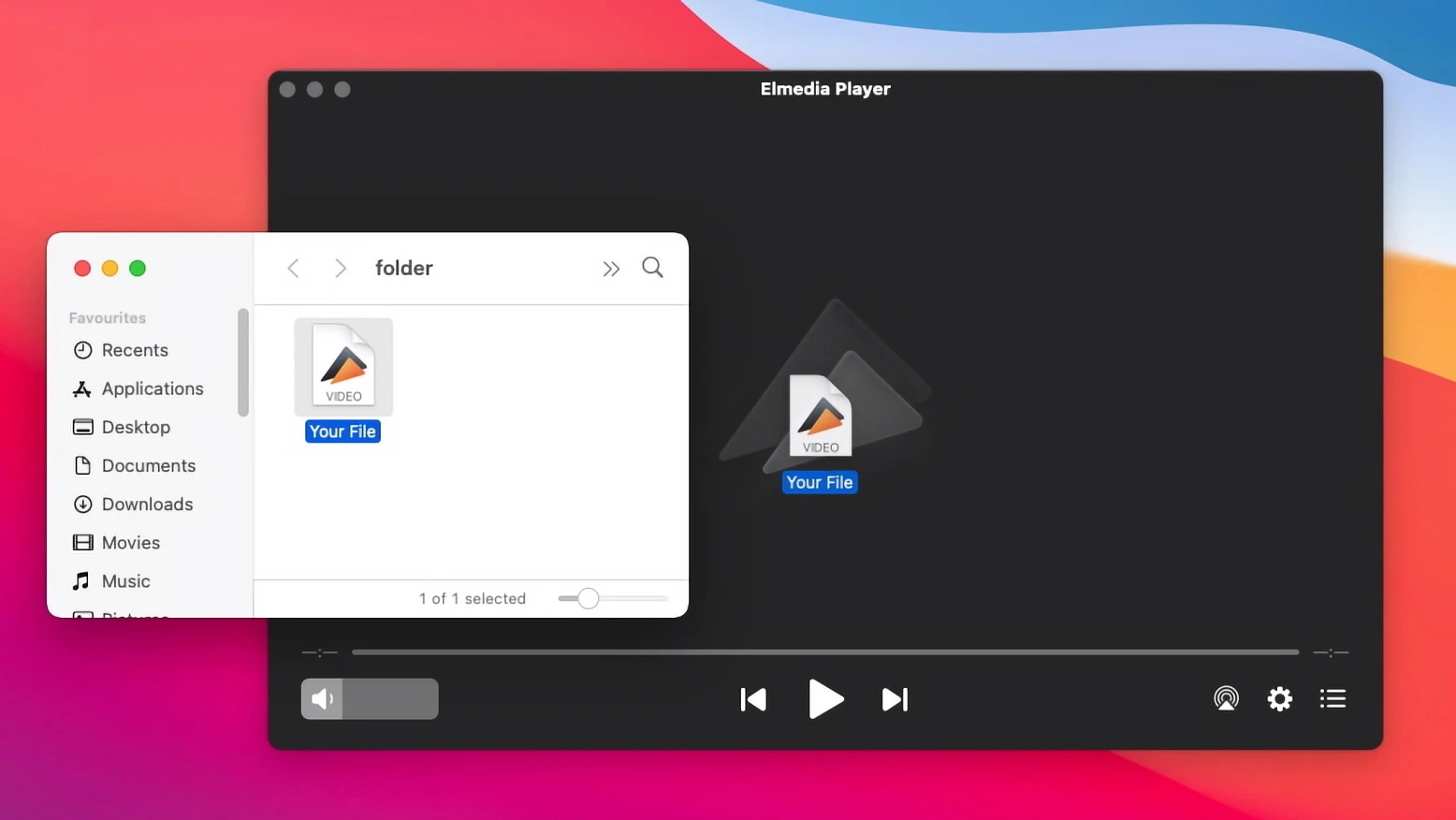
3. Enjoy your time. View your files with no lag, pause and unpause, rewind, etc. Have full control over your video playback with Elmedia Player
VLC
The next MXF player Mac users can get is VLC Media Player. It is a free and open source media player with a fairly wide range of options and features, such as playlist support, video filters, and subtitle synchronization. It can play most popular and not-so-popular video and audio formats (MKV, WMV, MXF, MP3, etc), as well as DVDs and streams. In addition, VLC offers cross-platform availability, so you can access it on macOS, Windows, iOS, and Android.
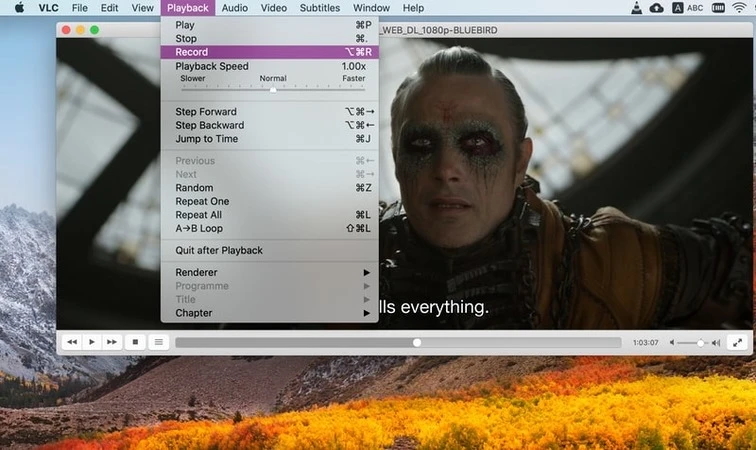
Pros
- Free and open-source
- Comes with built-in codecs
- Plays all video and audio formats
- Works on all platforms
Cons
- A bit outdated interface
- Not enough video editing features
Price: free
Platform: cross platform
Solution 2: Using MXF File Converter
Another solution for those who want to view MXF files on Mac is to use a converter and convert the .mxf to another QuickTime supported file format. However, this solution requires more actions, and most converters usually result in a reduction of quality and long conversion times.
Movavi
With Movavi Video Converter, converting MXF files is as simple as it can be. It is a multi-functional and easy-to-use program that lets you convert MXF to MP4 or any desired format. Movavi Video Converter supports all common files, including MOV, AVI, WMV, and many others. In addition to converting, you can compress media, edit videos, adjust colors and add effects.
To get started, you just need to download the appropriate version of the program for Windows or Mac and follow simple steps: add the file, select a format and convert.
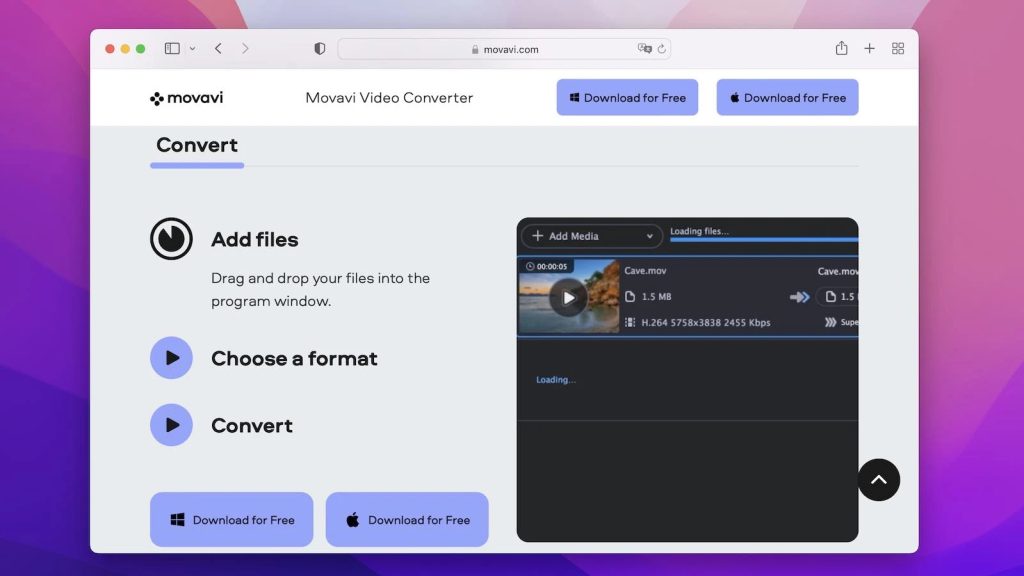
Pros
- User-friendly interface
- Fast conversion speed
- Maintains high quality in the converted files
Cons
- Costly app
- Some users report occasional crashes or bugs
Price: from $54.95
Platform: macOS, Windows
MXF vs. MP4: A Comparison
The key distinction between MXF and MP4 is their intended purpose of use. MXF, short for Material Exchange Format, was conceived for professional television, and some cameras nowadays record videos in this format. MP4, also known as MPEG-4 Part 14, was developed by the Moving Picture Experts Group for day-to-day use. That’s the main reason why MP4 files are so common and easy to work with. For a more advanced comparison between MXF and MP4 files, you can check out the table below:
| Comparison Parameter | MXF | MP4 |
| Developer | Society of Motion Picture and Television Engineers | Moving Picture Experts Group |
| File extension | .mxf | .mp4 |
| Video codecs | MPEG-1,2,4, H.264, DV, uncompressed, others | H.263, H.264, H.265, MPEG‑4, others |
| Audio codecs | AAC, MP3, AC‑3, PCM, others | AAC, MP3, AC‑3, ALAC, ALS, SLS, others |
| Usage | Advertisements and broadcasting programs on TV, storing video recordings from Sony and Canon cameras | Storing video files and streaming videos from the Internet |
How Does MXF Compare to Other Media Formats?
MXF isn’t really designed for user-friendliness. It’s a bulky format with a lot of overhead, poorly suited for personal use. Camcorders use MXF to avoid obsolescence – newer models tend to come with newer, faster codecs. That’s not the case on PC and Mac, where codecs tend to stick around for decades. All in all, you won’t see MXF replacing MP4 or MKV anytime soon.
Typical MXF-Using Camcorders
As camera vendors start adapting to Ultra HD, MXF becomes more and more necessary. Major manufacturers have adopted it as the standard for their recording hardware. Here is a list of camcorders that support MXF 4K:
Sony PMW-160, PMW-300K1, PMW-100, PMW-F55, PMW-320K, PMW-200, PMW-F5, PMW-F3, PDW-530, PMW-F3K, PDW-510, PMW-EX30, PMW-400L, PMW-500, PMW-F3L, PMW-400K, P, PMW-50, PMW-1000, MW-TD300, PXW-Z100, XDCAM HD422.
What Is MXF File?
Material Exchange Format, since that’s the full name of this video format became more popular by the day with the release of a lot of 4K cameras. But the concept of MXF exists for quite some time, being defined as a “wrapper” format that supports multiple streams of coded “essence”. These streams can be coded with many different codecs and include a metadata wrapper.
The MXF file type brings together audio, video, and programming data and puts them together in a wrapper. Thanks to its complexity, MXF can hold an extended range of video frames, filled with audio and data essence, as well as frame-based metadata. The frame-based metadata is mostly about file format and timecode information for each video frame, also known as interleaved media files.
Being primarily used in TV productions and movies, the MFX file type can handle a lot of Advanced Authoring Formats all under a policy called Zero Divergence Directive. This should enable mixed MXF and AAF workflows between non-linear editing, making it perfect for high-quality TV productions.
Frequently Asked Questions
Yes, MXF is among the VLC-supported file types, so if you have installed VLC Media Player, all you have to do is drag the MXF files into the main window in order to play them.
No, MXF is not the same as MP4. More detailed information as well as a comparison table between these two formats you can find in the corresponding paragraph in the article above.
MXF is a professional-grade container format and is more suitable for commercial applications – for example, in the TV industry. Besides that MXF is used by camera vendors, camcorders such as Sony and Panasonic.
MXF files are not as common as other file formats and are not well suited for personal use. To decode MXF files special codecs are required.

